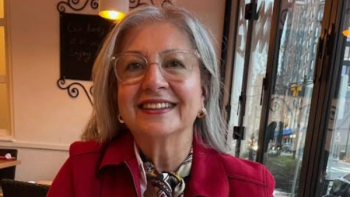
- Spring 2018
- Volume 1
- Issue 1
The Center of Attention
Under Medicare’s new oncology care model, patient-centric treatment aims to save money while improving health outcomes.
Cancer care is evolving into a more patient-centered system that strives to improve quality of care and outcomes while reducing spending. In July 2016, the Center for Medicare & Medicaid Innovation launched a five-year pilot program that is voluntary for practices that serve Medicare cancer patients: the Oncology Care Model (OCM), designed to provide higher-quality, more coordinated cancer care at a lower cost. It focuses on a “triple aim” — providing the right care at the right place at the right time.
A total of 187 medical practices or cancer centers, with the highest concentration in the eastern part of the country, were selected to participate, including OHC (Oncology Hematology Care) in Cincinnati, where I practice as a medical oncologist. We are part of the US Oncology Network, a large organization of community-based cancer centers, another 15 of which are also taking part in the OCM.
We have used the OCM for just a short time, treating about 1,500 patients at my practice under the model since it was launched. Collectively, across the network, we have offered OCM treatment to thousands affected by nearly all kinds of cancer. Consequently, we have already learned a lot about how the model affects patients with cancer.
PATIENTS THRIVE WITH PATIENT-CENTRIC CARE
Under the OCM, instead of paying doctors for a series of individual services, Medicare pays them for episodes of care, such as a patient’s six-month course of chemotherapy and associated treatment. Providers are encouraged to stick to national treatment guidelines to offer high-value care while eliminating unnecessary treatment.
The overall goal is to support “better care, smarter spending and healthier people,” according to the Centers for Medicare and Medicaid Services (CMS).
To achieve this, the OCM emphasizes shared decision making, with a focus on engaging and educating patients and caregivers about treat­ment choices and expected outcomes. Patients receive a written treatment plan that recaps the diagnosis, treatment goals, medications, side effects, toxicities and more. The constantly updated document enables patients to antici­pate what’s ahead and empowers them to make informed decisions. It also opens the door for discussions about advance care planning, which ensures that patients’ wishes are followed throughout the course of treatment.
A critical element of the OCM is patient naviga­tion. Cancer care is very complicated, involving many physicians, subspecialists and facilities. A navigator can improve care coordination by helping the patient transition smoothly from one provider to another, simplifying the cancer journey for those who are overwhelmed and fatigued.
The OCM also requires 24/7 access to care, so to remind patients to contact us rather than going to the emergency room (ER), we imple­mented a promotional campaign: “Call Us Early. Call Us First.” It highlights our oncology nurse triage center, which manages patient symptoms in real time. The ability to intervene early can reduce symptom severity, future complications and unnecessary ER visits and/or hospitaliza­tions. We also offer weekend hours for patients needing hydration and evaluation. Those on chemotherapy who go to the ER will most likely be admitted to the hospital, which can cost up to $2,000 a day. Better outcomes, reduced cost and quality care are the goals that drive this program.
Articles in this issue
over 7 years ago
A Time for Actionover 7 years ago
Team Playerover 7 years ago
Hold the Phoneover 7 years ago
Straight to the Heartover 7 years ago
Unbreakable Bonds




